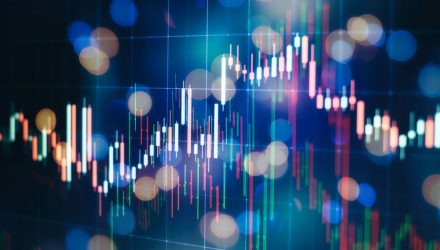Dividend growth is back in a big way this year. That’s a good thing, particularly with inflation soaring and bond yields tumbling.
Speaking of yields, the dividend yield on the S&P 500 is a paltry 1.27%. It’s a barely better 1.36% on the MSCI All Country World Index (ACWI). Of course, yields move inversely to prices, so those low yields are, in part, a reflection of steadily rising equity prices.
“Elevated cash levels, below average payout ratios… and an unprecedented recovery in corporate earnings are setting the stage for an extended rebound in shareholder distribution, in our view, which should ultimately be a positive for U.S. stock market performance as we look ahead to 2022,” Brian Belski, BMO’s chief investment strategist, said in a recent client note.
Those are positive factors, as is the fact that domestic companies are spending big on shareholder rewards. According to S&P Dow Jones data, S&P 500 companies spent 21% of second-quarter cash flow on dividends and 33.8% on share repurchases, compared to just 27.8% on capital spending and 18% on debt reduction.
The bad news is that, as noted above, dividend yields are historically low. For some investors, particularly retirees, those low yields can make equities unattractive if they’re looking to reduce portfolio risk and volatility.
“Because of the relentless rise in the S&P this year (up about 24% year-to-date), dividend yields, at 1.3%, are near historic lows,” reports Bob Pisani for CNBC. “The last time yields were this low was September 2000, when they hit 1.14%. The long-term average (since 1936) is 3.54%.”
Still, there’s something to be said for investing in quality companies with low dividend yields because those low yields imply capacity for growth. The SmartETFs Dividend Builder ETF (DIVS) is an example of an exchange traded fund that focuses on quality sources of durable payout growth.
The DIVS management team emphasizes companies’ balance sheets and cash flow-generating capabilities as avenues for identifying firms with the potential to grow payouts over the long haul.
While DIVS isn’t heavily allocated to big yielders in the energy and utilities sectors, it keeps investors away from potential dividend offenders, and it has solid inflation-fighting credentials.
For more news, information, and strategy, visit the Dividend Channel.
The opinions and forecasts expressed herein are solely those of Tom Lydon, and may not actually come to pass. Information on this site should not be used or construed as an offer to sell, a solicitation of an offer to buy, or a recommendation for any product.

